In this week's Naked Scientists NewsFlash, how 3-parent IVF can correct mitochondrial faults, why dung beetles stand on their balls and a bacterial cocktail to see off C. diff.
In this episode
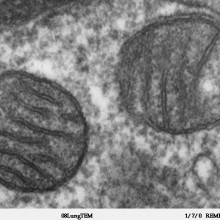
00:30 - Replacing Faulty Mitochondria
Replacing Faulty Mitochondria
Faults in mitochondria - the so-called powerhouse of a cell - are the cause of a number of human disorders. Now, researchers in Oregon have demonstrated successful replacement of mitochondrial DNA in egg cells that then developed into healthy animals.
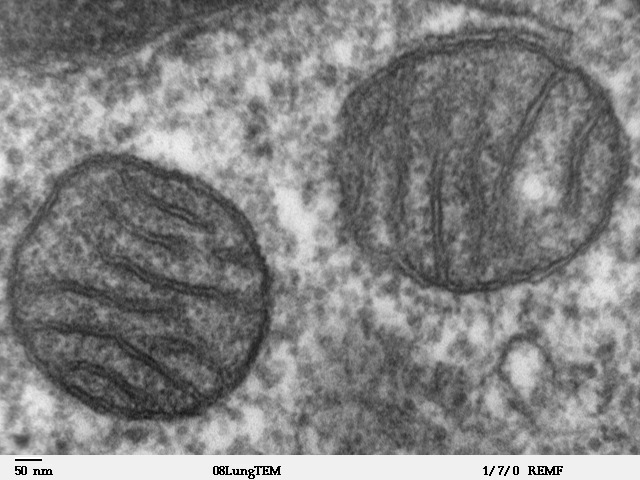 Mitochondria are passed down from mother to child, and errors in mitochondrial DNA (or mtDNA) can lead to a range of conditions, including heart failure, muscle weakness and blindness. It's thought that these errors may affect as many as 1 in 200 children, though around 1 in 5000 show evidence of disease at birth. There are currently no cures and present treatments only alleviate symptoms and delay disease progression.
Mitochondria are passed down from mother to child, and errors in mitochondrial DNA (or mtDNA) can lead to a range of conditions, including heart failure, muscle weakness and blindness. It's thought that these errors may affect as many as 1 in 200 children, though around 1 in 5000 show evidence of disease at birth. There are currently no cures and present treatments only alleviate symptoms and delay disease progression.
An ideal solution would be to avoid inheriting damaged mtDNA at all. To this end, Masahito Tachibana from the Oregon Health & Science University and colleagues have been researching ways to replace faulty mitochondria in human egg cells, or oocytes, with healthy ones from a donor.
Using donated human oocytes, the researchers extracted genomic DNA - the general DNA makes you unique - and implanted this into an egg that has healthy mitochondria, but has had its own genomic DNA removed. These eggs were then fertilized by IVF and allowed to form blastocysts - bundles of cells that could, potentially, go on to form a human embryo. Around half of these cells fertilized normally, and went on to produce similar numbers of stem cells as other control cells that hadn't had the DNA transplant, but were fertilized in the same way. This has been described as three-parent IVF, as the nuclear and mitochondrial DNA came from two different women.
The research on human cells stopped at this stage, but previous work has been carried out on eggs from macaque monkeys, transplanting the DNA in the same way. These eggs were implanted in female macaques, and have now developed into fully healthy, three-year-old monkeys.
The researchers, writing in the journal Nature, now call for more research into the safety and efficacy of this type of research, so that we can move forward into clinical trials.
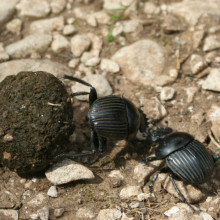
03:28 - Beetles use dung balls to keep cool
Beetles use dung balls to keep cool
South African dung beetles scuttling across scorching hot desert sands use their dung balls not just as food but also as a way to help keep themselves cool, a new study reveals.
The research team led by Jochen Smolka from the University of California Berkley watched dung beetles - also known as scarab beetles - rolling balls of dung across two circular arenas drawn into the sizzling sand at midday in the South African desert.
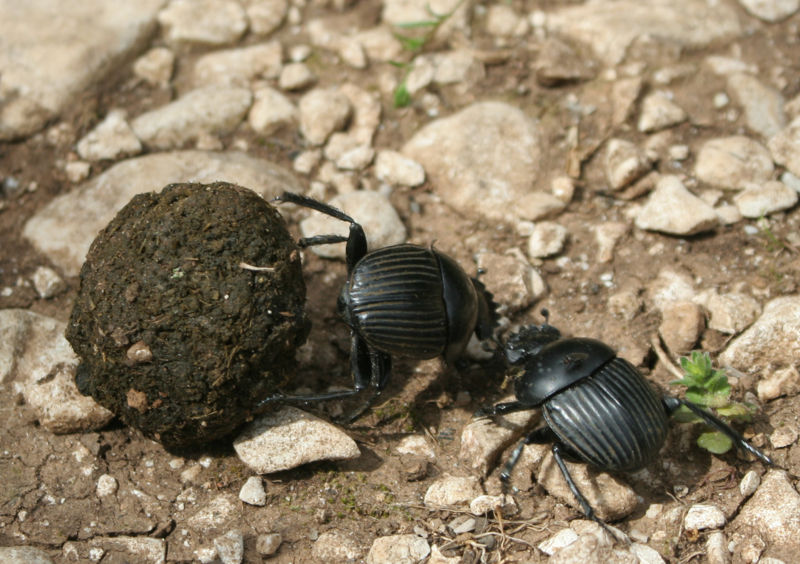 Publishing their results in the journal Current Biology, the team found that when they shaded the arena and kept the temperature below 50 degrees, the beetles crawled straight along without stopping. But at higher temperatures the beetles periodically stopped and climbed on top of their dung balls, where they preened their front legs - perhaps licking fluids onto themselves to cool down by evaporation.
Publishing their results in the journal Current Biology, the team found that when they shaded the arena and kept the temperature below 50 degrees, the beetles crawled straight along without stopping. But at higher temperatures the beetles periodically stopped and climbed on top of their dung balls, where they preened their front legs - perhaps licking fluids onto themselves to cool down by evaporation.
At progressively higher temperatures, the beetles climbed up on their balls more frequently until at 60°C they spent 70% of their time on top of their balls.
Using thermal imaging cameras the team found that while standing on sand, the beetles' legs can get 10 degrees hotter and then they cool down again quickly when they climb onto the ball.
To test whether getting hot feet is what causes the beetles to climb on their balls, the researchers gave the beetles little silicon booties to kept their feet insulated against the hot sand.
Putting on these boots reduced the number of times the beetles climbed up on their balls by 35%.
There are a few ways that the balls work to help keep the beetles cool. Firstly, they provide a platform so they can take a break from standing on the hot sand - desert ants do something similar by climbing up blades of grass.
The balls also provide the beetles with a heat sink because being moist they cool down by evaporation to around 31°C. To test whether cooler balls are better heat sinks, the team gave the beetles refrigerated and heated balls to push - the beetles climbed onto the hot balls (40°C) 73% more often than the cool balls (15°C). And since the beetles push rather than pull, the normal balls cool down the sand that the beetles then tread on by a couple of degrees.
So it seems that carrying around its own personal cooling device gives a dung beetle an advantage over other animals since it doesn't have to scurry off in search of shelter when things get too hot - all it has to do is take a break from the pushing and hop on top of its dung ball.
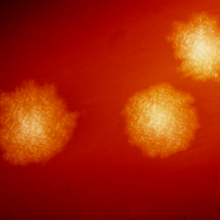
07:17 - Bacterial Cocktail Sees Off C. diff
Bacterial Cocktail Sees Off C. diff
Prof. Brendan Wren, London School of Hygiene and Tropical Medicine
Ben - Clostridium difficile, or C. diff. is a potentially lethal, often hospital-acquired infection of the gut, causing bloating, diarrhoea and abdominal pain. One strain, O27, is particularly aggressive, and has caused 50,000 cases and 5000 deaths in recent years in the UK alone. It's often associated with a disruption of the bacteria that normally live in the gut, the gut microbiota, so can be a big problem when people are treated with broad-spectrum antibiotics.
Now, new research at the Sanger Institute in Cambridge, the University of Aberdeen and the London School of Hygiene and Tropical Medicine has identified a cocktail of bacteria which, when fed to infected mice, clears out the C. diff. Brendan Wren, from the London School of Hygiene and Tropical Medicine, is involved in the project, and he joins us now.
Brendan, thank you ever so much for joining us. So, what really is the problem with C. diff?
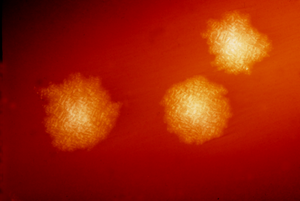 Brendan - It's a fairly unusual infection in the sense that antibiotics, which we all rely on, actually end up exacerbating the disease. So, when patients are given antibiotics, it kills the good bacteria as well as the bad bacteria and it disturbs the gut microbial balance. In other words, the antibiotics are indiscriminant and under these conditions, the bacterium Clostridium difficile takes over, produces toxins and as you mentioned, it can cause death and severe diarrhoea.
Brendan - It's a fairly unusual infection in the sense that antibiotics, which we all rely on, actually end up exacerbating the disease. So, when patients are given antibiotics, it kills the good bacteria as well as the bad bacteria and it disturbs the gut microbial balance. In other words, the antibiotics are indiscriminant and under these conditions, the bacterium Clostridium difficile takes over, produces toxins and as you mentioned, it can cause death and severe diarrhoea.
Ben - So traditionally, how do we treat it?
Brendan - There are some antibiotics that can be used, but these, again, do disturb the microflora and under these conditions patients are going to become more and more ill, and they can have multiple relapses. So, it's quite a desperate chronic disease, to the extent where in some countries, people have attempted to replace the microflora with bacteria from the faeces of a patient or near relative. So this faecal transplantation has been used fairly successfully in many patients to restore the microflora and overcome Clostridium difficile infection.
Ben - Now, faecal transplant, the very idea of it, has got quite a lot of yuck factor associated with it. Was this what inspired you to look for this particular cocktail of bacteria that you found?
Brendan - Well, my colleagues at the Sanger Institute have done exactly that, but important part of the study is that this mimicked the human disease in mice and that's allowed them to follow the disease and follow the populations of the bacteria in the gut, using the new 16S sequencing methods. This allowed them to know the relative proportions of very complex bacteria that is there and sure enough, when antibiotics are causing Clostridium difficile to take over the gut, they're able to monitor which bacteria became available as the mice recovered and ended up choosing a collection of six specific bacteria that could be used as a cocktail as a form of bacterial therapy. So now, we have a more rational approach as to restoring the gut microflora rather than using faecal transplantation.
Ben - it certainly gets over some of the yuck factor, doesn't it? What bacteria were these? Were these things we already knew about or is there something actually new to science here?
Brendan - Most of them are quite obscure and 3 of them were actually quite novel, and they've been fully sequenced now and can study them in far more detail. So, 3 of them were completely novel and I'm sure that there may be other bacteria out there that might be quite useful in a cocktail to help get back, to restore the normal microflora.
Ben - Now, is it something in particular about these bacteria that you think is performing the role or would it really work with any cocktail that's the right balance of bacteria?
Brendan - I think only some bacteria would allow this for various reasons. It's to do with competition for food and there are many different factors, but not all bacteria would be capable of doing this. So it's a form of probiotics, but it's a more rational approach, and we still have a lot to do to really understand why these in particular are good and I'm sure there's probably some others out there as well.
Ben - So, what's going to be the next step? Presumably, we can't just use the same bacteria because these are from mice, but can we apply the same sort of techniques to looking at the human gut microbiota and trying to work out if there are key microbes that we can then - as you said - put into a probiotic that we then use to treat C. diff?
Brendan - Yes, that's what we're doing currently with a new MRC £3million grant and we're looking at patients who come in to hospital before, after and during infection, then during reinfection. And using the new sequencing techniques we'll follow all the bacteria that's in the gut and work out an ideal combination that would allow rational bacteria therapy.
Ben - Now they say that your gut microbiota is as unique to you as your fingerprint. Does this mean that actually we'll have to work out a new cocktail for each person or in the mice, did you find that actually, there were these core bacteria that worked for every mouse you tested?
Brendan - At the moment, it did seem to work in most mice, but again, we won't know what will happen in humans. But there are some general species that we have great hope for and although people do have individual microbes, a thousand or so species, the point is that some of these would be particularly good at growing and counteracting the effect of competition with Clostridium difficile.
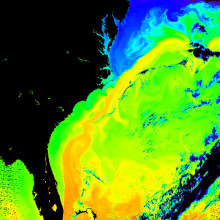
12:58 - How the Gulf Stream could be Melting Marine Methane
How the Gulf Stream could be Melting Marine Methane
Changes in the Gulf Stream over the last 5000 years are destabilising trapped methane over at least 10,000 square kilometres of the US eastern margin, and if this were to be released it could cause abrupt climate changes, according to research published in the journal Nature.
Methane hydrate is a solid form of ice and methane, and is stable at high pressures and low temperatures. They exist within the first few hundred metres of marine sediment in a region known as the Gas-Hydrate Stability Zone, or GHSZ, and represent one of the largest reservoirs of organic carbon on Earth. Sudden release of methane hydrate has been linked to past global climate changes, such as the Palaeocene-Eocene thermal maximum (PETM). Melting gas-hydrates have also been implicated in continental slope failures that cause underwater landslides.
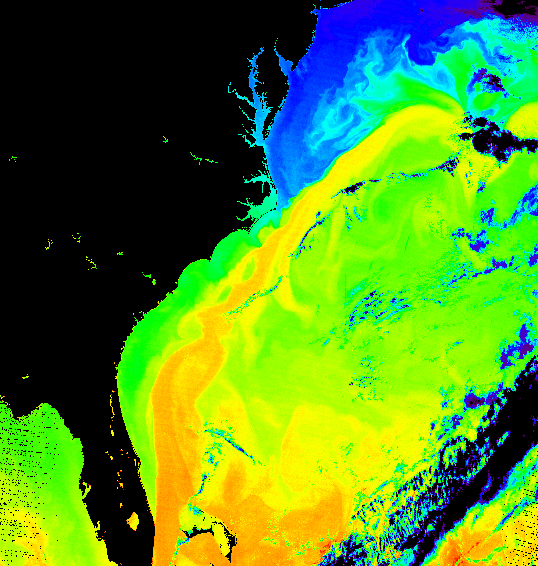 To investigate the stability of methane hydrates along the American continental shelf, Benjamin Phrampus & Matthew Hornbach at the Southern Methodist University in Dallas, Texas combined seismic data showing the depth of the GHSZ with thermal models. They found that stable zone is deeper than predicted from models based on current ocean temperatures, and suggest that this shows methane-hydrate melting occurring in the sub-seabed. Their results suggest that today's warmer temperatures are destabilizing up to 2.5 gigatonnes of methane hydrate.
To investigate the stability of methane hydrates along the American continental shelf, Benjamin Phrampus & Matthew Hornbach at the Southern Methodist University in Dallas, Texas combined seismic data showing the depth of the GHSZ with thermal models. They found that stable zone is deeper than predicted from models based on current ocean temperatures, and suggest that this shows methane-hydrate melting occurring in the sub-seabed. Their results suggest that today's warmer temperatures are destabilizing up to 2.5 gigatonnes of methane hydrate.
To try to explain this, the authors considered a number of different scenarios, and conclude that the most likely explanation is a change in either the temperature or location of the Gulf Stream - the warm current that flows across the Atlantic.
At present, it's unclear what affect this destabilisation may have, especially as there is some debate over the role of gas-hydrates in continental shelf instability, and predictions are that it could take as much as 5000 years for this methane to escape into the atmosphere. However, this new research highlights the importance of understanding methane hydrates, and points us towards new methods to research other important sites of methane storage where conditions are changing rapidly, such as in the arctic.
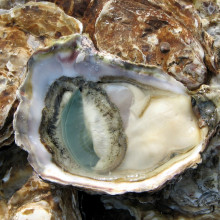
15:59 - The Plight of British Oyster Beds
The Plight of British Oyster Beds
Dr Philine zu Ermgassen, Cambridge University
Ben - Also this week, a conference at St Catharine's College, here in Cambridge, hoped to shed some light on the plight of British oyster beds. Despite being a long way from the coast, oysters were once an important trade in Cambridge, especially at the Stourbridge Fair - dredging the river Cam turns up lots of old oyster shells, worn smooth by the passage of time and water. But as well as an important commercial species, oysters played an important ecological role. To find out more about British oysters, I met Dr Philine zu Ermgassen on the banks of the Cam...
Philine - Native oysters used to be a really dominant ecosystem in coastal waters all around the temperate climate of the world actually, so in the US and around Europe. But in the mid-1800s, they suffered enormous fishing and enormous over exploitation just through huge demands and the increase in technology associated with that fishery. So they went through a huge population crash. They're just a fraction of their former populations and fundamentally, that habitat has disappeared for many of our coasts.
Ben - What are the threats that the oyster beds are facing? Is it purely over fishing or are there invasive species, disease, those sorts of problems as well?
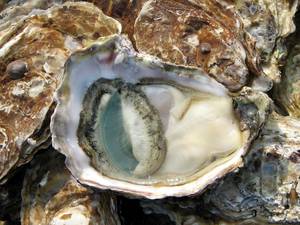 Philine - The beds have suffered from over exploitation, but the peak exploitation was really towards the end of the 1800s. Since then, they've never really recovered and that's as a result of numerous factors including invasive species, the introduction of a disease in the '80s which really has a high mortality on the native beds, as well as pollution.
Philine - The beds have suffered from over exploitation, but the peak exploitation was really towards the end of the 1800s. Since then, they've never really recovered and that's as a result of numerous factors including invasive species, the introduction of a disease in the '80s which really has a high mortality on the native beds, as well as pollution.
It's clear, we know now by looking at the oysters, that they provide a whole range of services which we definitely aren't getting anymore. Things like water filtration, they are filter feeders, so they clear the water column, making the water more transparent which is great for bottom rooting vegetation. They also help denitrify the water by concentrating these sediments full of nitrates which then bacteria work on to convert those nitrates that are very active biologically to nitrogen which is inert and can escape into the atmosphere. They also create fantastic structure which fish love as a habitat, particularly when they're small, they can hide between the oysters and suffer from a lower rate of predation as a result.
Ben - So, what would a typical healthy oyster bed look like?
Philine - There are very few examples remaining, but a typical healthy oyster bed would be made up predominantly of oysters. They'd be lying on the dead shells from previous generations of oysters, and they'd be at a relatively high density - probably, over 50 oysters per metre squared.
Ben - And what are the oyster beds that we do see now? What do they look like?
Philine - The oyster beds that we see today are defined by OSPAR, which is an international convention, as being more than 5 oysters per metre squared and they are really not habitat building. When we do find them they tend to be individuals scattered across the ground. They're not really building any habitat whatsoever anymore. They're really sitting on the sediments.
Ben - What do we think might be the impact if we do actually lose these oyster beds completely?
Philine - Again, we don't really know because we don't have very good baseline data and there aren't many good examples out there. What we do know is they have been lost completely from the Wadden Sea in the Netherlands and associated with that loss of habitat, there has been a loss of several associated species. It's clear that if we get these habitats back, we really hope that we can start to see a bolster of the populations that were previously associated with them. As yet, we can identify those species, we need a bit more science.
Ben - What now do we think we can start doing to try and get back to that position and to give ourselves healthy oyster beds again?
Philine - Oyster restoration has been really successful in the United States. They've invested a lot of money into restoration and they have huge public support for putting reefs back in water where they previously were found and now are non-existent. It's huge investment, but also, the public have really got behind it. We're not really seeing that yet in the United Kingdom. It would be great to see more support for the native oyster. Hopefully, as people realise the real value of the habitat that we've lost, we'll begin to see that motivation reappear in our communities. But certainly, in coastal communities still today, there is a great love of the oyster. There's a lot of cultural value associated with having that fishery and with knowing they're out there providing all these services.
Ben - What's going to be the next stage? How do we actually take this forward to come up with a more comprehensive, and a more joined up plan to make sure that we can protect these environments?
Philine - At the moment, really the key players in oyster restoration are the fishermen themselves. The fishermen have a great understanding of this habitat and of the species, and a fantastic cultural connection with them, and they're really the best advocates for restoration that we have. They're really pushing for restoration in the United Kingdom primarily so they can restart an active fishery on the basis of a native oyster and not just the non-native. I think that's definitely the place to start. Ideally, we'd love to see that grow into habitat restoration where restoration is taken purely for the habitat's sake and for all those services.
Ben - Does this mean that as a consumer, we should be asking for English oysters in order to encourage those fishermen to make sure they bring us the right things?
Philine - Absolutely. We should be eating more native oysters. It is a big concern that if we start to produce more, the culture associated with eating oysters more commonly has declined and that there won't be a demand. We'd love to be able to support our local fishermen in investing in this restoration to produce more native oysters.
Related Content
- Previous Can you melt a potato?
- Next Ugly Animals Need Love Too









Comments
Add a comment